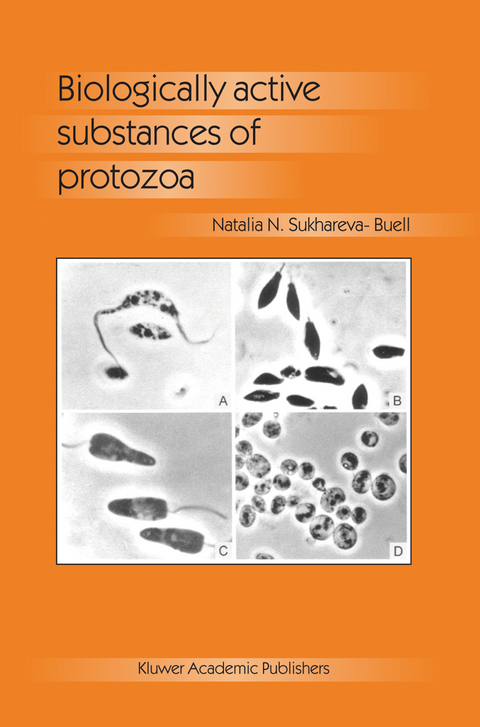
Biologically Active Substances of Protozoa
Springer-Verlag New York Inc.
978-1-4020-1281-5 (ISBN)
The search for new producers of biologically active substances (BAS) against human and animal diseases continues to be an important task in biology and medicine. Experimental work must be carried out well in advance of need because it takes an average of ten years to develop a new medication, as well as additional time to put it on the market. Study of the Protozoa forms a special branch of biology - protozoology. The traditional fields of protozoology are taxonomy, phylogeny, morphology, cytology, evolution, ecology and host parasite-interactions. The Protozoa is the only taxon among the microscopic organisms, which has not been persistently studied as a source of BAS. This book then is the result of the research on the project: "Biologically active substances of the Mastigophora (Flagellates)". The research was carried out at the Laboratory of Antibiotics, Department of Microbiology, Biological Faculty of Moscow State University. Articles of other authors on the matter have been considered as the important part of this reference book. The goal of the reference book is to elucidate scientific approaches, which lead to obtaining biologically active substances from cultures of protozoa; the book reviews the historical background in connection with contemporary development of the field. N.N. Sukhareva ACKNOWLEDGMENTS The research was performed in fruitful cooperation with my research associates (V. Urinyuk, T. Titiova, L. Udalova, R. Zeleneva, V. Brusovanik, M. Zaretskaya), postgraduate students (N. Kalenik, M. Chuenkova, V. Vasilevskaya, V. Khorokhorina), my colleagues at Moscow State University (Yu. Kozlov and I.
1. Protozoa as producers of biologically active substances.- 1.1 Trypanosoma cruzi as the source of medications; selection of other species among flagellates.- 1.2 Toxins and detoxification substances.- 1.3 Biologically active substances of soil Protozoa.- 2. Cultivation of flagellates.- 2.1 Media for cultivation of flagellates.- 2.2 Physiological role of main media components in the cultures of flagellates.- 2.3 Conditions for flagellates growth and stimulated biosynthesis of lipids.- 3. Lipids of flagellates.- 3.1 Phospholipids and sterols.- 3.2 Fatty acids and conditions for stimulated biosynthesis.- 3.3 Biosynthesis of lipids by flagellates.- 4. Glycosylated lipids of flagellates.- 4.1 Glycosyl-phosphatidylinositol (GPI) and related GIPL, LPG and LPPG.- 4.2 Biological functions of GPI and related glycophospholipids.- 5. Surface membrane glycoproteins of flagellates.- 5.1 Variant surface glycoproteins (VSGs) and their genes rearrangement.- 5.2 Sialic acids and trans-sialidases.- 5.3 Membrane mucins and mucin-like glycoproteins.- 6. Cytokines, eicosanoids and nitric oxide as effector molecules against parasitic flagellates.- 6.1 Cytokines.- 6.2 Eicosanoids.- 6.3 Nitric oxide.- 7. Biologically active substances of selected flagellates.- 7.1 Total lipid fraction: correlation between its composition and biological activity.- 7.2 Astasilid, its composition and biological activity.- 7.3 Membrane glycophospholipid (GPL) and it’s biological activity.- 7.4 Reserve polysaccharide from Astasia longa and it’s biological activity.- Conclusion.- References.
| Erscheint lt. Verlag | 31.7.2003 |
|---|---|
| Zusatzinfo | XIV, 112 p. |
| Verlagsort | New York, NY |
| Sprache | englisch |
| Maße | 155 x 235 mm |
| Themenwelt | Naturwissenschaften ► Biologie ► Biochemie |
| Naturwissenschaften ► Biologie ► Mikrobiologie / Immunologie | |
| Naturwissenschaften ► Biologie ► Zoologie | |
| ISBN-10 | 1-4020-1281-0 / 1402012810 |
| ISBN-13 | 978-1-4020-1281-5 / 9781402012815 |
| Zustand | Neuware |
| Haben Sie eine Frage zum Produkt? |
aus dem Bereich


